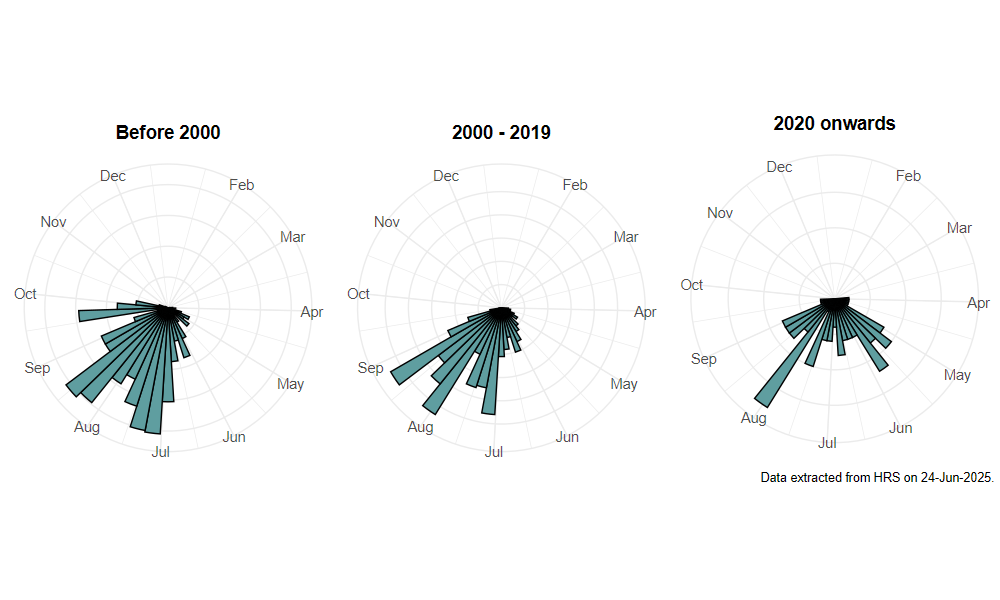Eristalis abusiva Collin, 1931
Identification
Identification difficulty = 3. ![]()
![]() according to Ball & Morris, 20241
according to Ball & Morris, 20241
Synonymy
Eristalis abusivus Collin, 1931 in Stubbs & Falk (19832, 20023). The issue here is whether the generic name Eristalis should be considered as masculine or feminine and hence dictate the '-us' or '-a' ending for the specific name. Although ICZN ruled in 1993 that this and some other genera should be treated as feminine, this has not been accepetd by all authors, so you may still see the masculine form used in some publications.
Biology
The larva is of the 'long-tailed', aquatic type, and is associated with wet, decaying organic matter such as that around ponds. It has been found at the edge of a pond on moorland (Smith, 1989)4. Adults are usually seen visiting flowers around the edges of scrub, hedges and tall vegetation near the larval habitat.
Flight period
The following plots show the number of unique records per week excluding those reported to be of immature stages.

Distribution
Although widely distributed, this species is rarely encountered inland. Most records are coastal, especially from the west coast. Records extend north to the Island of Lewis in the Outer Hebrides and to Mainland Shetland. It is possible that this species is overlooked as most recorders expect to encounter it in coastal localities but it does occur inland.

Trends
The following plots show the Frescalo TFactor vs year and a map of the rescaled frequency (all records) for the species.
-
Ball, S., & Morris, R. (2024). Hoverflies of Britain and Ireland. WILDGuides (3rd ed.). Oxford: Princeton University Press. ↩
-
Stubbs, A., & Falk, S. (1983). British Hoverflies: An Illustrated Identification Guide (1st ed.). Reading: BENHS. ↩
-
Stubbs, A., & Falk, S. (2002). British Hoverflies An Illustrated Identification Guide (2nd ed.). Reading: BENHS. ↩
-
Smith, K. (1989). An introduction to the immature stages of British flies . Handbooks for the Identification of British Insects, 10(14), 1–280. ↩